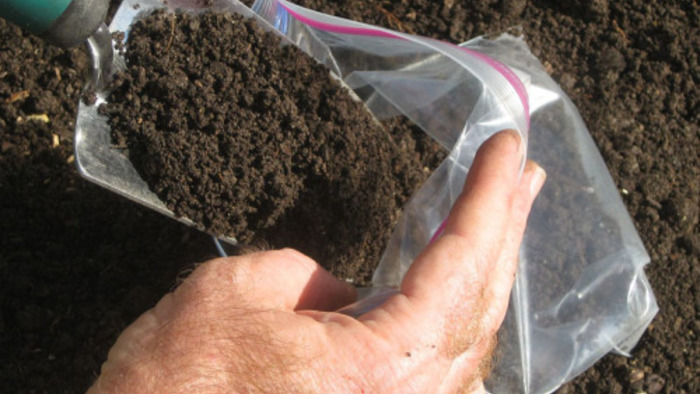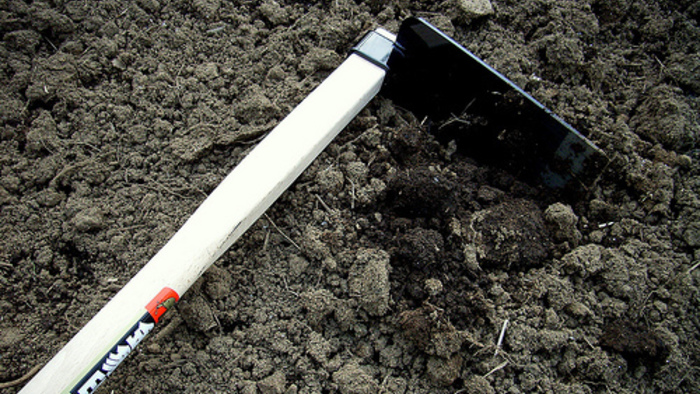
Most people know that soil pH is a measure of how acidic or alkaline your soil is. Soils naturally have a wide range of pH values, with most ranging from 3.5, which is very acidic, up to 10, which is highly alkaline. Most garden plants prefer soil that is neutral to slightly acidic, with a pH value around 6.5 to 7.
The main reason why most plants flourish in the neutral zone is that the majority of plant nutrients are easily accessible within this range. Nitrogen, for instance, is less available below 5.5 and above 8. When soil pH falls outside of those numbers, it is very hard for plant roots to access that essential nutrient. Of course, there are acid-loving plants, such as magnolias (Magnolia spp. and cvs., Zones 3–9), and those that favor alkaline soil, such as forsythia (Forsythia spp. and cvs., Zones 4–9). It is best to grow plants that thrive in the native pH of your area if possible, but if your soil is too acidic or basic for the plants you want to grow, they will not be able to take up nutrients well unless you adjust the soil pH to bring it into their optimal range. For this reason, it is important to measure and understand the pH of your soil.
For a precise measurement of soil pH, it is best to collect and submit a soil sample to a soil testing lab. This is also a good time to get a full laboratory analysis of your soil if an initial assessment has never been done. Soil testing can often be done for under $20 per sample, and the results should be available within a couple of weeks. Most laboratory professionals recommend testing your soil’s pH (and nutrient availability) every two to five years through a lab even if it has naturally fallen in an ideal range in the past. However, if you’re managing soil with a pH that may need to be raised or lowered yearly, it is essential to test it more often. In this case, it is recommended that gardeners assess their pH with a home test every spring.
Given the number of options available, it is easy and inexpensive to monitor and test soil pH from home. The following are five easy testing methods you can employ right at your kitchen countertop.
1. Analog probes

There are many pH testing probes on the market. One benefit of these tools is that they are easy to use. You simply insert the probe into the soil, wait several minutes, and then read the result. This saves time because you don’t have to collect soil samples, but it is not as accurate as a lab test. Most analog pH probes measure more than one soil factor and include a moisture meter, among other options. Prices range from $7 to $30.
2. Testing strips

One of the oldest and most accurate methods for assessing soil pH at home is pH testing strips. To use these strips you must collect a soil sample and mix it with distilled water; that makes it a more time-intensive method. The strips change colors to report the pH, so it is essential that you be able to color-match accurately. The results are generally ready in one minute. This method is very inexpensive, with 100 strips costing around $12.
3. Digital meters

Digital pH meters offer the same information as the analog pH probes, but they may be easier to read, as they provide a specific number and you don’t have to read the result on a dial. Some users believe that analog meters are more accurate, but in general a high-quality digital reader should give a strong ballpark figure of your pH. Digital pH meters range from $20 to $100.
4. Home pantry method

Also known as the vinegar and baking soda method, this pH test can be done with ingredients you likely have in your kitchen pantry. You first take a soil sample and split it into two jars. Add enough distilled water to the soil to make a slurry with a milkshake texture. Add baking soda to one jar and mix. Then add vinegar to the other and mix. If the baking soda mixture bubbles, you likely have acidic soil; if the vinegar mixture bubbles, you likely have alkaline soil. This method is best used as an initial assessment of your soil pH or as an educational activity.
5. Test kits

Many companies offer soil testing kits that allow gardeners to take their own sample and then mail it (generally in a bag that is included with the test) to the company for results, which are generally ready in a week or two. It’s best to check reviews online, as these testing companies have various methods, turnaround times, and specialties. Mail-in test kits range from $15 to $60 per sample.
Kirsten Kurtz received her master of science degree from Cornell University and now manages Cornell’s soil health laboratory.
Learn more about soil health:


















Comments
Log in or create an account to post a comment.
Sign up Log in